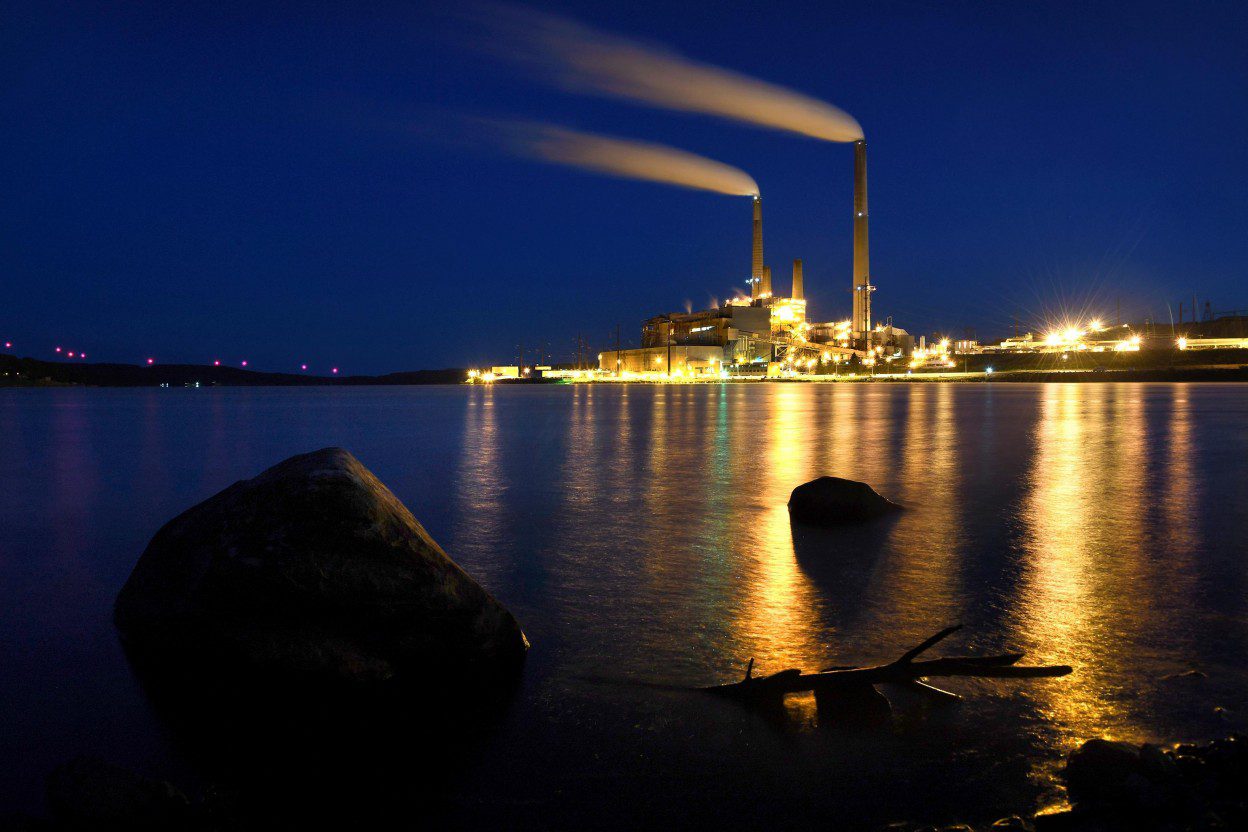Boone County claims to be the birthplace of America’s coal industry, the rich and abundant black rock discovered in these verdant hills almost three centuries ago. Coal gives name to nearly everything in these parts — the Big and Little Coal rivers, the weekly Coal Valley News, the wondrous Bituminous Coal Heritage Foundation Museum and the West Virginia Coal Festival, celebrating, as we arrive in town, its 24th year.
The festival is more state fair than true celebration of coal. There’s a carnival, a talent competition, seven beauty queens (from Little Miss Coal Festival to Forever West Virginia Coal Queen).
Late in the afternoon of the second day, high on a hill graced with the statue of a miner, there’s a small memorial service for the West Virginia men who died on the job over the previous year. The most recent was 32-year-old Rodney Osborne, pinned by mining equipment on June 14. The total deaths are five, fewer than the number of Miss Coal Festivals who wilt in the heat on the steps of the neoclassical courthouse, draped in charcoal-black sashes. No coal executives bother to show up, nor any reps from the once-robust union.
Coal mining, celebrated with rhinestones and pageantry, is an enduring legacy rather than a thriving enterprise. Which is coal country’s problem, and the challenge for its boosters. We’re stuck on the idea of coal, its potent history and Walker Evans imagery, although much of the world has moved on.
But not Boone County. Not yet.
“We’re keeping our heritage alive. We don’t want it to be a dying industry,” says Delores W. Cook, titularly the festival’s vice president/treasurer/assistant director but in fact its true sovereign. “This has been a way of life for people in West Virginia, keeping the lights on for all of the United States, for many, many years.”

Delores Cook is vice president of the coal festival. Her late husband, Dennis, worked in the mines for more than 42 years. (Michael S. Williamson/The Washington Post)

Jayla Cottrell, 14, left, the festival’s “Forever Queen” and Miah Brown, 16, the “Teen Queen,” at the Bituminous Coal Heritage Foundation Museum. (Michael S. Williamson/The Washington Post)
Cook adjusts her meringue of hair. She’s a coal miner’s daughter, a distinction residents declare in introductions, akin to being the child of a veteran with a proud chest of medals.
Her late husband, Dennis “De” Cook — every miner seems to sport a diminutive — worked coal “42 and a half years,” she says, making sure every last month is honored. De’s hard hat, plastered with union and company stickers, adorns a cross at the courthouse event, removed from its customary place atop a museum mannequin.
Boone’s fortunes rose and subsequently plummeted along with the industry. But coal’s grip holds hard, a source of revenue that the state has been slow to replace. Fewer than 700 county residents worked the mines last year. The school district is Boone’s largest employer, but it was forced to lay off 150 workers when income from the severance tax on coal extraction last year dropped to a fifth of what it was less than a decade ago.
Decades past its heyday, and despite the availability of cleaner and more widely used energy resources, coal is enjoying its moment in politics, culture and the environmental debate. It has assumed a prominence in our national conversation far greater than its current consumption: 15 percent of America’s energy resources, producing about a third of all electricity. It’s as though we had revived a discussion about locomotives. Fracking, recently a constant in the news, has been relegated to the back burner. Oil, too.
Coal dominated the energy debate during the presidential campaign, embraced by Donald Trump and dismissed as obsolete by Hillary Clinton.
“We’ve got to move away from coal and all the other fossil fuels,” said the Democratic candidate, promptly rendering her a pariah here.
Coal is an idea some Americans can’t quit, although it employed fewer than 66,000 miners in 2015. The Kohl’s department store chain has more than twice as many workers.
But retail doesn’t play as powerfully in the American imagination, launching stories, inspiring music, forging identity. “Entire communities were formed to mine” coal, says Barbara Freese, author of “Coal: A Human History.” “Coal created its own geographical area and culture.”
The mountainous sweep of Appalachia seized the spotlight, mined for gold by journalists who had miscalculated Trump’s ascendancy and the region’s pivotal role in his election. J.D. Vance’s memoir “Hillbilly Elegy,” viewed as a decoder of Appalachian culture, has spent nearly a year crowning the bestseller list.
“I happen to love the coal miners,” declared President Trump in June, announcing the U.S. withdrawal from the Paris climate accord. Trump has welcomed coal miners and executives to the White House for a photo op, the first in ages, and declared “an end to the war on coal” — a term minted by an industry association — at a time when even the Kentucky Coal Museum is switching to solar energy.

This 24-hour coal operation is one of many such facilities along the Kanawha River just south of Charleston, W.Va. Coal “will come back,” says one state resident, “but never the way that it was.” (Michael S. Williamson/The Washington Post)
Southern West Virginia is a place of both startling beauty and hardship, a juxtaposition that became all the more pronounced when companies started blowing off mountaintops to harvest fuel using fewer men, wrecking the state’s grand scenery in the quest for coal.
“We’re learning we can’t have all our eggs in one basket. We need to grow and diversify,” says state Sen. Ron Stollings (D) at the festival opening, reading from Democratic U.S. Sen. Joe Manchin III’s address.
But in this region, coal is a tradition that continues to haunt.
“It’s not only an industry that’s lost, but a way of life, one filled with terrible hardships,” says composer Julia Wolfe, whose Pulitzer Prize-winning oratorio, “Anthracite Fields,” commemorates Pennsylvania’s miners. “The trick is not to romanticize the life. There are very beautiful things about the community’s dependence on each other, but there’s also terrible abuse and negligence.”
The industry was long marked by excessive volatility: all in during boom times — then neglect, with companies decamping under the cloak of bankruptcy, threatening pensions, wrecking the security of proud men. Jobs evaporated. But the mountains remained.
“There’s still a lot of coal in these hills,” says Cook, a former state representative and the steward of perpetual optimism. The fuel never dried up, only its viability, which profoundly affected the community.
The companies often cared less about the men than the commodity, a story the museum subtly reveals through its artifacts, without rancor or editorializing.
Miners were required to purchase work tools from company stores. Security was an afterthought. “We didn’t have reflective gear when I worked in the mines,” says former miner (fourth-generation) Tim Spratt, visiting the museum with his grandson, gesturing toward a vitrine. “That was only for supervisors.”
Spratt, who sang at the memorial service, once worked “low coal” in a hole less than three feet high. “Which is a hard job for a fat man,” he says.
“I liked the camaraderie with my fellow miners,” adds resident Rickey Woodrum, who spent a decade underground before he turned to operating auto-body shops. “I liked the money. It was tough. It will make you tough. But it put your kids through college.”
So they wouldn’t ever have to work the mines.
Mining is, was, the rare job where a man — invariably, a man — could provide for his family, making $80,000 or $90,000 in a good year, with just a high school degree, often less, rising up by working below.
The industry’s declining fortunes contributed to the death of opportunity for many men to be their families’ top wage-earner, another conversation of our times.
“Coal’s been going downhill since World War II,” says former miner Jim Chaney. “In Boone County, it used to be you mined the coal or you moved the coal.”
Now, he believes, “it will come back, but never the way that it was.” It’s a coda you hear constantly in coal country.

The Upper Big Branch Miners Memorial near Whitesville, W.Va., honors 29 miners who were killed in a mine accident in 2010. (Michael S. Williamson/The Washington Post)

Ex-coal miner Johnny Bishop sells miner gear and other apparel in Welch, one of the poorest towns in West Virginia. (Michael S. Williamson/The Washington Post)
West Virginia, seceding from Confederate Virginia in 1863, is the only state created by the Civil War. (Yet plenty of Confederate flags are on display, including several affixed to a carnival stand.) Instead of battlefields, the state produced a landscape of mining conflicts and disasters: Matewan, the Battle of Blair Mountain (the town is now little more than a commemorative plaque), Upper Big Branch.
The industry’s dirty, dramatic and violent history was dominated by outsize union leaders and predatory companies that removed the coal and the wealth and left behind towns that resemble Depression-era movie sets and became visual catnip for documentary filmmakers and photographers.
Six decades ago, McDowell was a county of 100,000. Today, it’s a fifth the size, and West Virginia’s poorest county. In 2015, it garnered national attention for all the wrong reasons: as home to the nation’s highest rate of opioid-induced deaths.
Outside Welch, one of McDowell’s many poor towns, Johnny Bishop, 65, his skin tanned oak, is folded inside a white van on an empty road selling apparel, including mining gear with bands of reflective tape.
Bishop labored for 16 years in the mines, two years picking on his knees in holes 28 inches high. On his worst day, he was shocked by 480 volts from a live wire. Fourth-generation in the mines, he returned to work two days later.
“If you’re a miner, your crew is like your brothers in the mines,” he says.
But business got bad. Bishop’s health got worse. Prescribed opioids for the pain, he took them but says he never got hooked, then quit them cold.
Ultimately, he left the holler, worked construction in Virginia, urged his five children not to become fifth-generation, and ultimately moved back to where the living was less taxing.
The coal companies and the nation’s leaders “didn’t pay attention to us,” he says. “We used to have so much here. We got coal. We got natural gas. We got timber. There used to be no poor people in McDowell County.”
Now, that’s almost all McDowell has.
How much for the miner’s shirt? Two dollars. We tip him three.

Pro-coal signage is found all over West Virginia, where the coal industry has been a way of life for more than a century. (Michael S. Williamson/The Washington Post)
Wednesday is mariachi night at the Hacienda restaurant, where three employees were detained by U.S. Immigration and Customs Enforcement in May for having improper papers. Everyone was thrilled when two of them came back.
While the beauty queens hold court at the festival memorial service, miners coming off their most recent shift choose to relax here with fajitas and beer.
Trains used to pass through Boone County eight times a day, sometimes more. Residents in housing yards from the tracks cursed the constant racket, others the frustration of driving behind a slow coal truck on two-lane roads over the hills.
No more. Those trains and trucks are now like Christmas.
At 7 p.m., as the carnival lights brighten narrow Main Street, a train plows through Madison, scores of cars loaded with peaks of coal.
“Yoo-hoo! Hear that?” gasps Cook. “The coal train!” She almost breaks into a jig.
https://www.washingtonpost.com/lifestyle/style/coal-no-longer-fuels-america-but-the-legacy–and-the-myth–remain/2017/07/07/d8a8bcb4-582b-11e7-b38e-35fd8e0c288f_story.html?hpid=hp_hp-top-table-main_coal-930pm%3Ahomepage%2Fstory&utm_term=.df64b2f0aa6f










